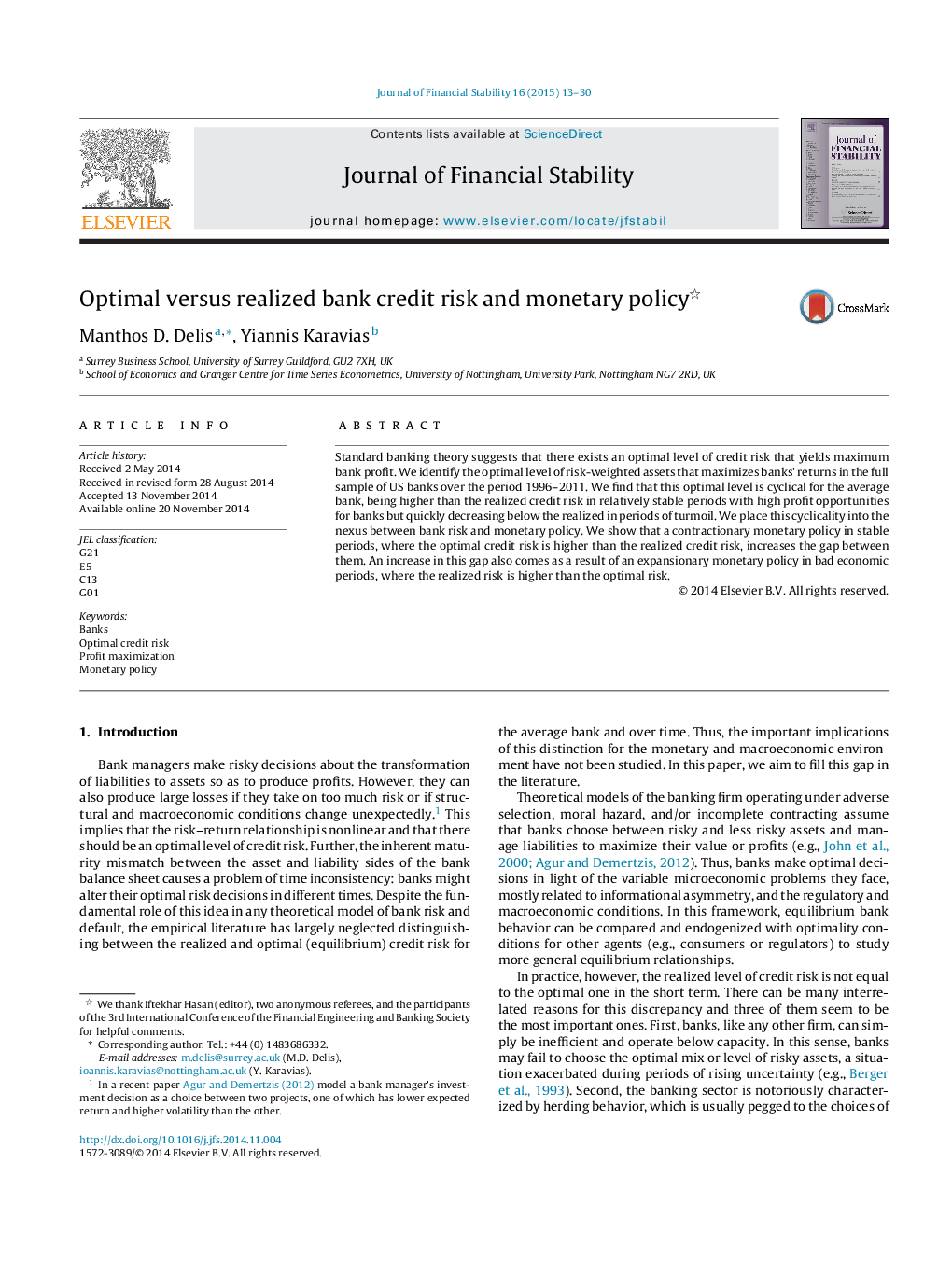| Article ID | Journal | Published Year | Pages | File Type |
|---|---|---|---|---|
| 1000020 | Journal of Financial Stability | 2015 | 18 Pages |
Abstract
Standard banking theory suggests that there exists an optimal level of credit risk that yields maximum bank profit. We identify the optimal level of risk-weighted assets that maximizes banks’ returns in the full sample of US banks over the period 1996–2011. We find that this optimal level is cyclical for the average bank, being higher than the realized credit risk in relatively stable periods with high profit opportunities for banks but quickly decreasing below the realized in periods of turmoil. We place this cyclicality into the nexus between bank risk and monetary policy. We show that a contractionary monetary policy in stable periods, where the optimal credit risk is higher than the realized credit risk, increases the gap between them. An increase in this gap also comes as a result of an expansionary monetary policy in bad economic periods, where the realized risk is higher than the optimal risk.
Related Topics
Social Sciences and Humanities
Economics, Econometrics and Finance
Economics, Econometrics and Finance (General)
Authors
Manthos D. Delis, Yiannis Karavias,
